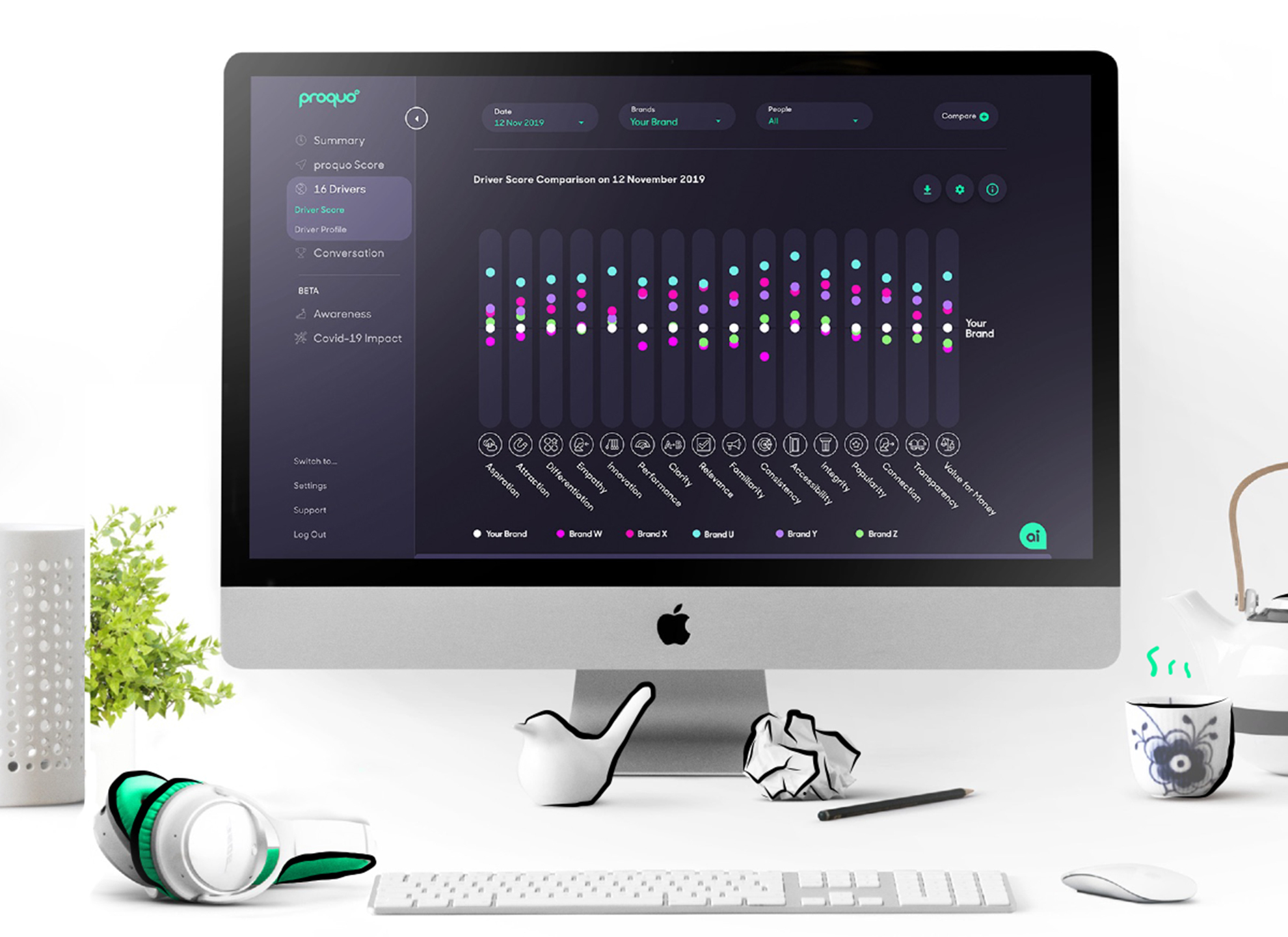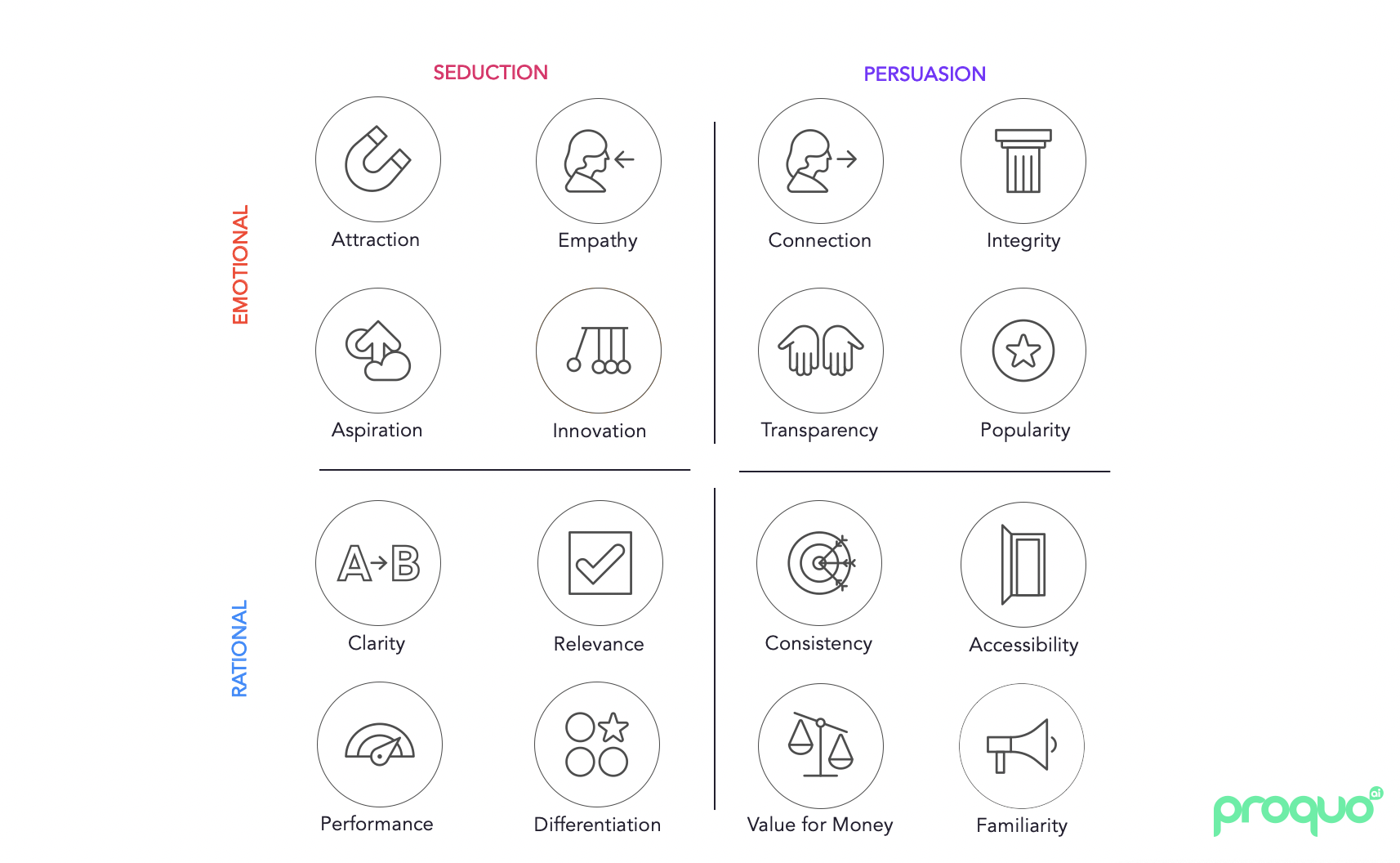Posted on May 18, 2020
Updated on October 26, 2020
2 min read time

Exchange
Relationships are fundamental to being human. We live to make connections with other people, and to learn and grow. And what makes lasting relationships? People stay in relationships so long as what they get out of them is equal to or greater than what they put into them. And they leave if it’s not.
We live in an era of competitive convergence. In most categories, at least two brands, often more, will have functional parity. Functional parity happens when more than one brand offers, for all intents and purposes, the same product or service.
Your iPhone and Android might boast a different number of lenses, or built-in storage, but broadly, they’re the same. Still, you’ll buy one or the other based on what you feel about them. Crossing the Atlantic? British Airlines and American Airlines will provide similar planes, meals, schedules, loyalty programs, and prices. But you’ll still have a preference on which to take. Fiat or Ford? L’Oreal or Pantene? Maybelline or Max Factor? Expedia or Booking.com? Functional parity is everywhere.
What differs is the sense of exchange that people have in their relationships with these brands. If they get more than a bare minimum of functional performance, they are far more likely to want to interact with you. What they need is a strong relationship built upon positive exchange. It’s quid pro quo tilted to the benefit of the consumer.
Seduction and Persuasion
Humans are clever things: We feel. We think. Sometimes those two things are in accord, sometimes not. We’re also a mixture of emotional and rational in how we respond to brands. We can even think emotionally and feel rationally. It’s complex!
Then we respond to things – brands too – mainly in terms of two of their characteristics.
First, their Seduction. Do they draw us in? Is their fundamental proposition desirable? Second, their Persuasion. Do we feel we can commit to a relationship with them? Do they make themselves available and behave in a way with which we can truly connect?
It’s like Promise and Proof. Proposition and Activation.
Relationship Drivers
To form strong brand relationships, we need to turn art into a science. Through a mixture of anthropology, sociology, psychology, and neuroscience, as well as testing over 600 brands in 85% of the world’s spoken languages, we have proven that people make brand decisions mainly on the basis of fundamental human “Drivers”.
It’s not about category attributes.
For example, people will choose your ice cream less by whether it drips more slowly than another, and more on the basis of Empathy (your brand showing understanding of their needs) or Transparency (being open about what is in it and how you make it).
If you want your brand to maintain a relationship with your audience, you need to understand the fundamental Relationship Drivers. And though you can’t stop performing on category needs, it’s clear your brand will not win the competitive race simply on product performance. Success comes from delivering well on the 16 Drivers.

Optimizing your Quid Pro Quo
When you know what people need from your category in terms of these 16 Relationship Drivers, and you’ve figured out how your competitors perform against them, you can decide how to make the most of your brand’s power of exchange.
At ProQuo AI, we use this triangulation to fuel our AI. It identifies the hygienes that your brand needs to satisfy, competitive strengths you need to rival, and open spaces in which you can differentiate your brand. We help to monitor, guide and manage brands, by showing you what to do next, to develop a lasting relationship. We help you to make your brand grow bigger, faster.
Interested in discovering how our ProQuo AI Brand Management platform works? Explore our live demo to learn more.
Our intelligent platform will take your brand further, faster.
Don’t believe us?
© 2020-2023 ProQuo AI International
All rights reservedWebsite by Blend